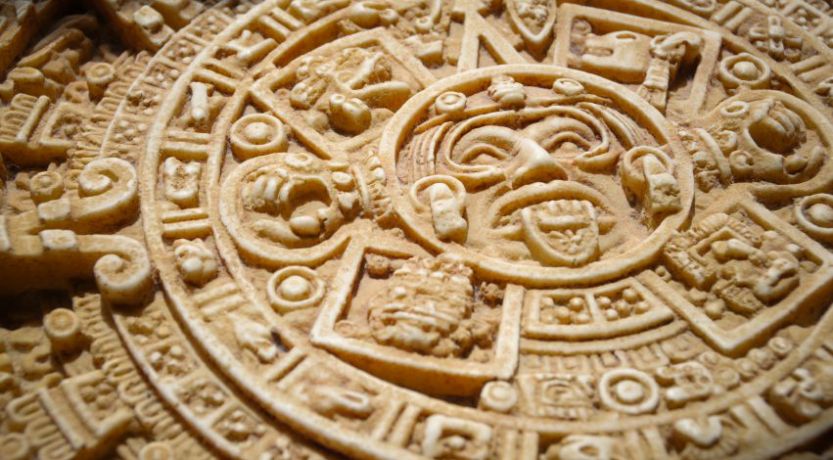An intriguing prophecy of the end of life as we know it is supposedly found in the Mayan calendar. Is there any truth behind the 2012 Mayan prophecy fears?

Is 2012 the end of the Mayan calendar and the world?
Before considering the Mayan prophecy that has drawn so much attention, consider the conditions that have created so much interest.
Fascination with global disaster
Predictions of a global disaster destroying all human life have become common. The possibilities for such an event seem endless, from the total melting of the polar ice caps, to massive droughts, to enormous earthquakes, to mega-volcanoes and bigger tsunamis wreaking havoc around the earth.
Looking upward, others watch the paths of stray asteroids that might hit the earth with unimaginable force and trigger another ice age that would bring about the end of days for humanity.
A number of pseudoscientific studies are now looking at the possibilities of extreme natural disasters that haven’t been seen in modern history. Scientific charts and scenarios can be studied in depth in books with titles such as Apocalypse 2012, The World Cataclysm in 2012 and How to Survive 2012. David Morrison, a senior scientist for NASA’s Astrobiology Institute, has counted 200 different books for sale about the year 2012!
In conjunction with end-of-the-world predictions, many are studying the prophecies of ancient cultures and peoples. Writings of Mayan, Hindu and Hopi Indian origin, along with those from Nostradamus and Leonardo da Vinci, have been gaining popularity in recent years.
Capitalizing on public anxiety, Sony Pictures released a “megadisaster” film called 2012 on Nov. 13, 2009. The synopsis of the movie reads: “Never before has a date in history been so significant to so many cultures, so many religions, scientists, and governments. ‘2012’ is an epic adventure about a global cataclysm that brings an end to the world and tells of the heroic struggle of the survivors.”
Another promo for the movie 2012 states: “December 21, 2012 … welcome to the last day on earth. Disaster has descended from the sky and the earth is shaken to its core. The oceans consume our shores, and beyond. All technology fails. The earth has shut down.”
The end according to the 2012 Mayan prophecy
With the public keenly aware of doomsday predictions, the Mayan “Long Count” calendar has drawn considerable attention for supposedly pinpointing Dec. 21, 2012, as the date of global upheaval and destruction bringing the world to a sudden end. This prediction is commonly referenced in pop-culture media as “the 2012 problem.”
The Mayans and the Aztecs, along with other South American civilizations, shared many aspects of the same calendar. The Mayan calendar had the most refinements and intricacies. Technically, it is eight different concentric calendars, with a concluding date of Dec. 21, 2012. Both the Mayan and Aztec cultures believed there had already been four ages of mankind prior to our own. The Aztecs had central to their philosophy a belief in the cyclical nature of time and an awesome fear that one day their world would come to an end. It seems that they believed that the sun would one day no longer send its life force, thereby bringing to an end the fifth and last age of man.
Dispelling the myths
So how will the world end? Some believers in the 2012 Mayan prophecy suggest that a large planet named Nibiru or Planet X will come into our solar system and collide with earth in December; but if this were to be the case, astronomers would have detected it with telescopes long ago.
Furthermore, most scholars consider the “end-of-the-world” prediction associated with the Mayan “Long Count” calendar to be a misinterpretation. They state that the year 2012 will not be a time of global destruction but simply a shift from one cycle to another.
The real story of the future
The Bible, written by prophets inspired by God, offers a far different scenario for determining the general season when the end of this present age will occur. This end date will not come according to a calendar. In contrast to human postulations, Jesus said that only God the Father knows the exact date of Jesus’ return (Mark 13:32).
Why do humans have a tendency to listen to unreliable sources and believe things that are not true? The Bible explains that an evil spirit called Satan “deceives the whole world” (Revelation 12:9).
Additionally, God’s Word adds that another reason people are deceived is because they do not have a love for the truth. Note this passage: “The coming of the lawless one is according to the working of Satan, with all power, signs, and lying wonders, and with all unrighteous deception among those who perish, because they did not receive the love of the truth, that they might be saved” (2 Thessalonians 2:9-10).
In ancient times God gave His laws and guidelines to Israel with the expectation that its citizens would be examples of faith and good conduct to the other surrounding nations. God told the ancient Israelites that He was going to drive out the previous occupants of the land because “they listened to soothsayers and diviners,” which God describes as an “abomination”—something horrible and evil (Deuteronomy 18:14, 12).
A soothsayer is a person who professes to foretell events. A diviner is someone who attempts to contact supernatural powers to determine answers to questions hidden to humans and usually involving the future. Continuing, God told the Israelites, “but as for you, the Lord your God has not appointed such for you” (verse 14).
This timeless instruction remains valid for us today. The Bible alone has the credibility and authority to address our questions regarding end times—not a Mayan prophecy supposedly of 2012. For solid answers, be sure to read our articles “Is the Bible True?” and “What Is the Day of the Lord?”





